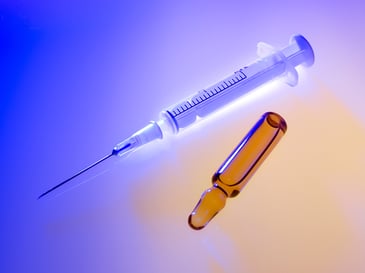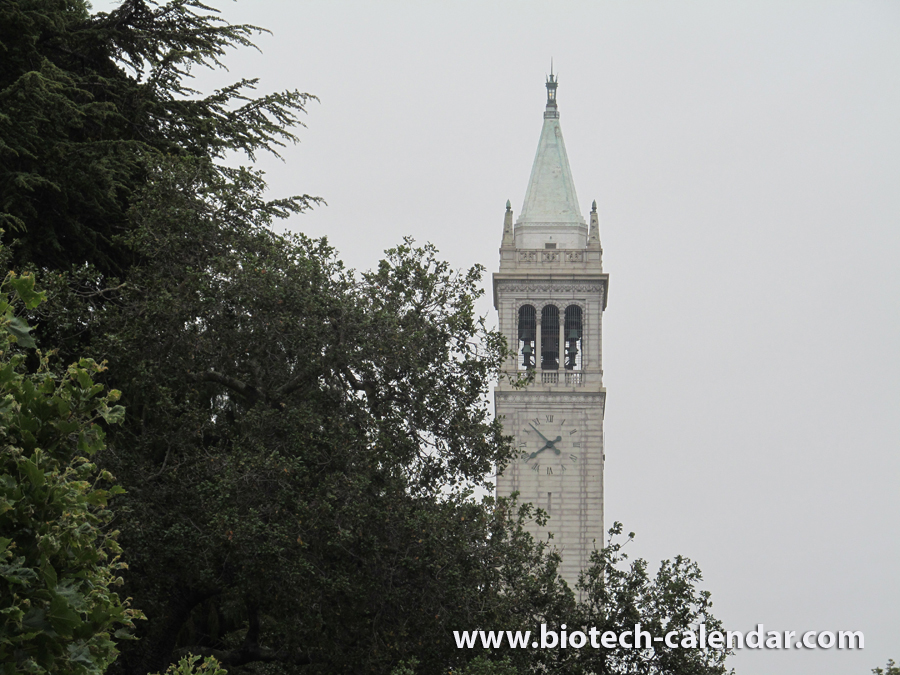 Each year in the United States, more than 2 million people develop antibiotic-resistant infections and at least 23,000 people die as a result, according to the U.S. Centers for Disease Control and Prevention.
Each year in the United States, more than 2 million people develop antibiotic-resistant infections and at least 23,000 people die as a result, according to the U.S. Centers for Disease Control and Prevention.
Tags: CA, infectious diseases, California, 2015, Berkeley, BioResearch Product Faire Event, NIH funding, UC Berkeley, UCBerk, NIH grants, best lab supply tradeshows, best science tradeshows
 Researchers at University of California, Berkeley have been doing a lot of bird watching lately to help understand the spread of infectious disease. In a recent study they found that Lyme disease, which many believe is spread by rodents and small mammals, is in fact regularly transmitted by several species of birds as well.
Researchers at University of California, Berkeley have been doing a lot of bird watching lately to help understand the spread of infectious disease. In a recent study they found that Lyme disease, which many believe is spread by rodents and small mammals, is in fact regularly transmitted by several species of birds as well.
Read More
Tags: CA, Bioresearch, Lyme Disease, Southwest, California, 2015, Berkeley, disease research, BioResearch Product Faire Event, UC Berkeley, UCBerk
 Going “green” in chemistry has become a lot more lucrative than was anticipated just 18 short months ago. In June of 2013, Biotechnology Calendar Inc. reported that the green chemistry market was expected to grow from $2.8 billion in 2011 to $98.5B by 2020 and will save the industry $65.5B. However, recent reports indicate that we may actually see growth in the bio-based chemicals market from $78B in 2012 to $198B by 2017, eventually accounting for 50% of the chemicals market by 2050.
Going “green” in chemistry has become a lot more lucrative than was anticipated just 18 short months ago. In June of 2013, Biotechnology Calendar Inc. reported that the green chemistry market was expected to grow from $2.8 billion in 2011 to $98.5B by 2020 and will save the industry $65.5B. However, recent reports indicate that we may actually see growth in the bio-based chemicals market from $78B in 2012 to $198B by 2017, eventually accounting for 50% of the chemicals market by 2050.
Read More
Tags: CA, University of California Berkeley, chemical research, California, 2015, Berkeley, BioResearch Product Faire Event, Research Funding, green life science research
The Environmental Protection Agency limits the amount of arsenic in U.S. public drinking water to 10 parts per billion (ppb). Water that comes from privately owned wells may contain higher levels of arsenic, especially in areas where the groundwater flows over arsenic-rich bedrock. In a recent study done by UC Berkeley, arsenic was found to potentially show benefits as a cancer fighting agent.
Tags: CA, water, cancer research, Southwest, 2015, Berkeley, BioResearch Product Faire Event, UC Berkeley, UCBerk
Emmanuelle Charpentier, Ph.D., and Jennifer A. Doudna, Ph.D., have been awarded the 2015 Breakthrough Prize in Life Sciences for their work in developing the CRISPR/Cas9 genome editing tool. Dr. Charpentier is the head of the Regulation in Infection Biology department at the Helmholtz-Zentrum für Infektionsforschung (Helmholtz Centre for Infection Research) in Braunschweig, Germany, and also a co-founder and advisor to Swiss drug developer CRISPR Therapeutics.
Read MoreTags: CA, genome research, Southwest, genetic engineering, 2015, Berkeley, BioResearch Product Faire Event, UC Berkeley, UCBerk
UC Berkeley is one of the top institutions in the world based on quality of the research produced. UC Berkeley researchers need to keep up with the latest advances in tools and technology to stay at the top of their fields. To help UC Berkeley reseachers keep up with technology, Biotechnology Calendar, Inc. invites laboratory supply companies to demonstrate their new and innovative research equipment, kits, and reagents at the upcoming 17th ANNUAL Berkeley BioResearch Product Faire Event ON JUNE 4, 2014.
Researchers are seeking new equipment at the:


Berkeley's prestige is tied in with the quality of its faculty:
Among its current faculty:
- 8 Faculty members are Nobel laureates
- 141 Faculty are National Academy of Sciences members
- 94 Faculty are National Academy of Engineering members
- 13 Faculty have received the National Medal of Science
- 230 Faculty are American Academy of Arts and Sciences fellows
Research Funding:
Each year, the Berkeley campus receives well over half a billion dollars in research support from external sources. In the fiscal year ending June 30, 2013, UC Berkeley attracted $705.1 million in new research funding. This represents a 38 percent increase over the past decade. Many of these research awards fund multi-year projects and support expenditures that will be reflected in subsequent years.
The federal government provided 47 percent of these sponsored research funds, and California state agencies, industry, and the non-profit sector supplied the rest. Of the research funding provided by the U.S. government, the largest contributors are the Department of Health and Human Services and the National Science Foundation, with each contributing approximately one third of the federal funding.
10 Funding Facts about UCBerkeley:
- NSF 2012 Ranking: 62nd (total R&D expenditures in life sciences) =$208,788,000
- NIH 2012 Ranking: 56th (Direct plus indirect costs but excluding R & D contracts and ARRA awards) = $118,610,088
- UC Berkley has completed construction on the Alternative Energy building, where research can now begin. The $133 million biofuels research building houses labs for the study of molecular and microbial biology, fermentation and chemical separation, greenhouses, and dry and cold rooms.
- UC Berkley has been reimbursed $30 million for the Berkley Lab research facility construction, which began in the summer of 2012. The building is due to open in 2014, funds had been held due to economic pressures, but have now been released and the project is on its way. Scientist’s will be researching and developing an artificial photosynthesis process.
- The National Health Institute has awarded UC Berkeley $12.8 million for research into cancer, neuro-degenerative diseases and radioactive decontamination as well as other medical health conditions.
- University of California, Berkeley has received a five year $10 million grant from the National Science Foundation to develop powerful new tools to help extract key information from the large quantity of loose data in the world.
- The Bryolab at UC Berkley is to receive part of a $5.1 million grant for its work in biocoding a complete ecosystem.
- The National Science Foundation has awarded UC Berkeley more Graduate Research Fellowships than any other university.
- The Department of Molecular and Cell Biology at UC Berkeley received $1 million to support research into Lupus.
- In 2007 global energy firm, BP, awarded $500 million over 10 years to the University of California, Berkeley, in partnership with the Lawrence Berkeley National Laboratory (LBNL) and the University of Illinois at Urbana-Champaign. The funding created the Energy Biosciences Institute (EBI) to develop new sources of energy and reduce the impact of energy consumption on the environment.
Tags: 2014, CA, Southwest, Berkeley, BioResearch Product Faire Event, UC Berkeley, UCBerk
Researchers at UC Berkeley recently developed a novel imaging technique that allowed them to observe cellular processes in Cyanobacteria, one of the most common forms of bacteria. This research was a collaborative project involving researchers from UC Berkeley and the Department of Energy Joint Genome Institute (DOE JGI).
Tags: 2014, University of California Berkeley, Southwest, California, Cell Imaging, Berkeley, BioResearch Product Faire Event, UC Berkeley, UCBerk
There are exciting things happening in the Berkeley life science research industry. Of particular interest is the developing partnership between UC Berkeley and the Lawrence Berkeley Lab. This partnership has the potential to foster more collaboration between institutions and allow for more joint research ventures in the East Bay Area.
Tags: 2014, Southwest, California, Berkeley, BioResearch Product Faire Event, UC Berkeley, UCBerk, New Life Science Funding, Lawrence Berkeley Lab, New Research Partnership
 Synthetic biology is the application of engineering principles to altering components of biological systems, like genes and cells, towards creating new and revised living things (watch the video below for an introduction). It's arguably the most radical, cutting-edge laboratory science field today, and one that calls on its scientists to grapple with ethics as well as biotechnology. At the forefront of this life science revolution is the University of California Berkeley-led consortium SynBERC: the Synthetic Biology Engineering Research Center, with partner colleagues at UCSF, Stanford, MIT, and Harvard. Just this week, principal synbio investigators from these institutions came together with industry scientists and ethicists for a symposium on the UCB campus titled Programming Life: the revolutionary potential of synthetic biology, co-sponsored by SynBERC and Discover Magazine. Whether we are going to continue down the road of reengineering life was not the question so much as how we will go about that delicate task and what the implications and promises are of such a bold project.
Synthetic biology is the application of engineering principles to altering components of biological systems, like genes and cells, towards creating new and revised living things (watch the video below for an introduction). It's arguably the most radical, cutting-edge laboratory science field today, and one that calls on its scientists to grapple with ethics as well as biotechnology. At the forefront of this life science revolution is the University of California Berkeley-led consortium SynBERC: the Synthetic Biology Engineering Research Center, with partner colleagues at UCSF, Stanford, MIT, and Harvard. Just this week, principal synbio investigators from these institutions came together with industry scientists and ethicists for a symposium on the UCB campus titled Programming Life: the revolutionary potential of synthetic biology, co-sponsored by SynBERC and Discover Magazine. Whether we are going to continue down the road of reengineering life was not the question so much as how we will go about that delicate task and what the implications and promises are of such a bold project.
Tags: 2014, CA, 2013, University of California Berkeley, biofuels, synthetic biology, Southwest, California, University of California, genetic engineering, Berkeley, BioResearch Product Faire Event, Research, Berkeley Labs, UCBerk, UC Berkley
The Brain Activity Map project could be the next big federal life science research endeavor, with no less a goal than the mapping of the entire living brain and all its neuronal activity. Like the Human Genome Project of the 90's, the not insignificant financial outlay is being presented as an investment that will net even bigger returns, both in terms of new technology and a vastly increased understanding of the mind. President Obama is expected to include the multi-billion dollar, decade-long funding in his upcoming budget proposal, and neuroscience research was a topic he addressed specifically in his recent State of the Union address.
Tags: 2014, CA, University of California San Diego, 2013, Northeast, University of California Berkeley, New York, Columbia University, Southwest, California, University of California, Berkeley, Neuroscience, San Diego, SDVS, Columbia, BioResearch Product Faire Event, Funding, UCSD, NY, NIH, Columbia University Medical Center, Biotechnology Vendor Showcase, Berkeley Labs, UCBerk



